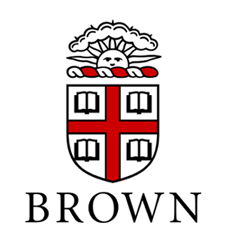Biographical / Historical
George Earl Church was born in New Bedford, Massachusetts, on December 7, 1835. He was the son of George Washington Church—a direct descendant of Captain Benjamin Church who fought in the King Philip War—and Margaret Fisher Church—from a Yorkshire family later involved in the steam railway industry in England. Through his background he acquired a taste for the combined careers of engineer, explorer, soldier, author and scholar.
At the age of three, Church moved to Providence, Rhode Island, with his widowed mother. He entered high school in 1849 and seven years later, having learned the rudiments of engineering from his tutors, he was employed on the Hoosac tunnel of the Boston & Maine Railroad.
In 1857, at the age of 22, he traveled to Buenos Aires to serve as chief engineer on a new railway project—later postponed—for the Argentine Republic. While the project was on hold, Church took the opportunity to join a scientific commission to explore the southwestern border of Argentina and propose plans for its defense against marauding native tribes. The commission lasted nine months and covered 7,000 miles. Following this expedition he began work for the Argentine Great Northern Railway—his initial assignment.
Civil war broke out in the United States and Church returned to Providence to join the 7th Rhode Island Infantry. In February 1863, he was appointed colonel of the 11th Rhode Island Regiment, and after its term expired in December 1864, was named colonel of the 2nd Rhode Island Regiment. While his last regiment was being recruited, he acted as chief engineer for the Fall River railway extension of Providence, Warren, and Bristol.
His interest in the French intervention in Mexico led him to write an article entitled "An Historical Review of Mexico and its Revolutions", printed in the New York Herald on May 25, 1866. Having concluded his service in the Civil War, the U.S. State Department made arrangements for Church to travel to Mexico as a war correspondent for the Herald. The U.S. government needed secure and reliable reports of the conflict, and Church's findings could provide them the necessary information. Church reached the Mexican patriot army, and eventually became one of the principal military advisers of President Juarez. He served in the last two campaigns against the Maximilian Empire, 1866-67, yet when Juarez won his decisive victory, Church tried unsuccessfully to reach Washington to save the life of the ill-fated emperor.
In 1868, the Bolivian government invited Church to undertake a project that would provide the landlocked country a means of communication to the Atlantic. Church accepted the invitation and proceeded to Bolivia via Buenos Aires. From the Argentine capital, he rode overland 2,000 miles to La Paz where he was granted the required concession for the navigation of Bolivian rivers. He returned to New York via Panama, but soon after his arrival, he traveled back to La Paz, at the request of the Bolivian government. Thence he proceeded to Rio de Janeiro, via the Strait of Magellan, to obtain from the Brazilian government the right to construct a railway to avoid the falls of the river Madeira. Church explored a region of some 250 miles on the upper Amazon, 1,600 miles from the ocean. Once the Brazilian concession was granted, Church returned to New York and in June 1870, under charter from the U.S. government, he organized the National Bolivian Navigation Company. Church became president of the company and began to encounter many legal obstacles. His competitors - merchants of the Pacific coast - sought to ensure that his engineering and financial plans to open Bolivia to trade by way of the Amazon and its tributaries would never come to fruition. After five years of fighting his opponents in the English courts, the House of Lords settled the question by declaring the enterprise impracticable. Church abandoned the project and left Bolivia in 1879.
The U.S. government sought Church's expertise for an assignment that brought him back to the southern continent. In 1880, he reported on the political, financial and trade conditions of Ecuador, an investigation he combined with two English commissions concerning bonds linked to Ecuadorian foreign debt and the construction of a railway line.
He returned to Argentina in 1889 with another railroad project in hand and became an advisor for English investors venturing in Central and South America. In 1895 he spent time in Costa Rica, negotiating on behalf of bondholders of the national debt, and preparing a report on the Costa Rican railroad, involving investigation of the banana industry.
During his last 30 years, Church resided mostly in London, devoting much time to literary pursuits and to scientific societies. He became a valued contributor to The Times, a vice-president of the Royal Geographic Society, a councilor of the Hakluyt Society and a fellow of the Royal Geographical Society—the first non-British subject to be elected a member of its council. Toward the end of his life, he traveled frequently to North America where he studied the conditions and prospects for a new transcontinental railroad in Canada.
Church fell in love with Natalia Palacios in La Paz, Bolivia. According to family lore he invited Natalia to move with him to London but she decided to stay in La Paz. She subsequently gave birth to a daughter named Margarita Palacios who later married Daniel Lopez Videla. Church did not know about the existence of Margarita until 1891 after which time he wrote to her and provided for her financially. He then met Olivia Sconzia (alias Gofforth), a well-regarded musician and composer with whom he had two daughters - Blanche Church Pedrazzoli, born in Paris, France, on May 18, 1874, and Nora Church Pedrazzoli, born in Florence, Italy, on February 2, 1878. Church married Alice Helena Carter in 1882. Following Carter's death in 1898, he married Anna Marion Chapman, daughter of Sir Robert Harding. He died in London on January 4, 1910.


